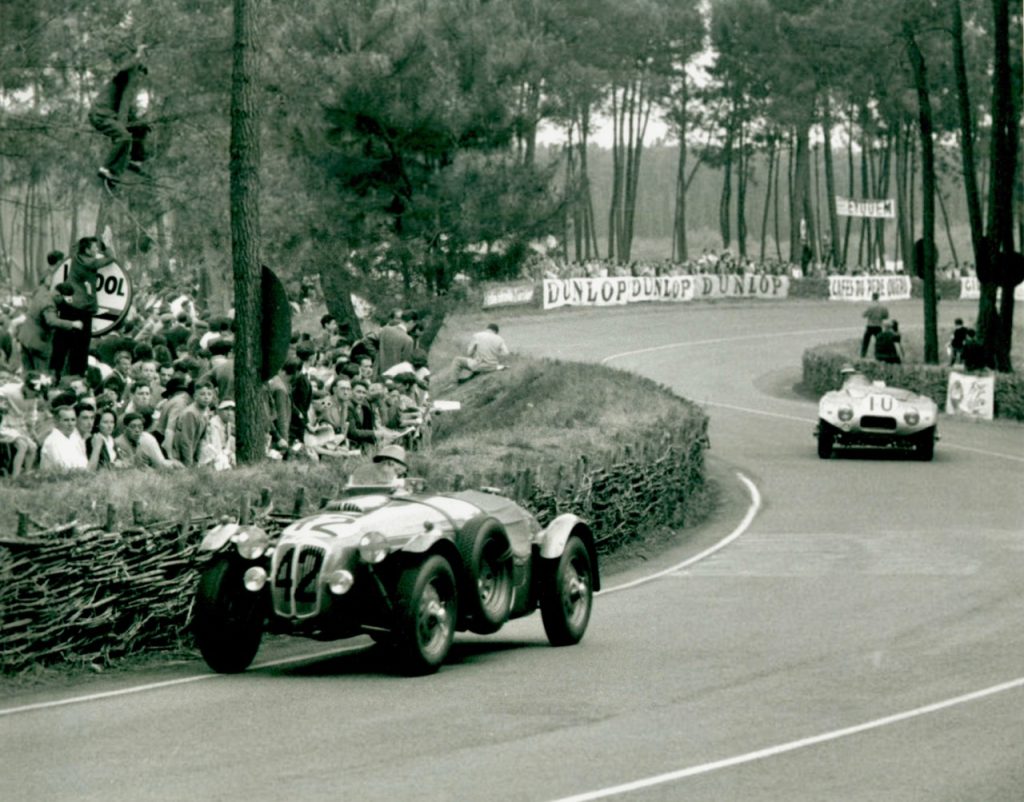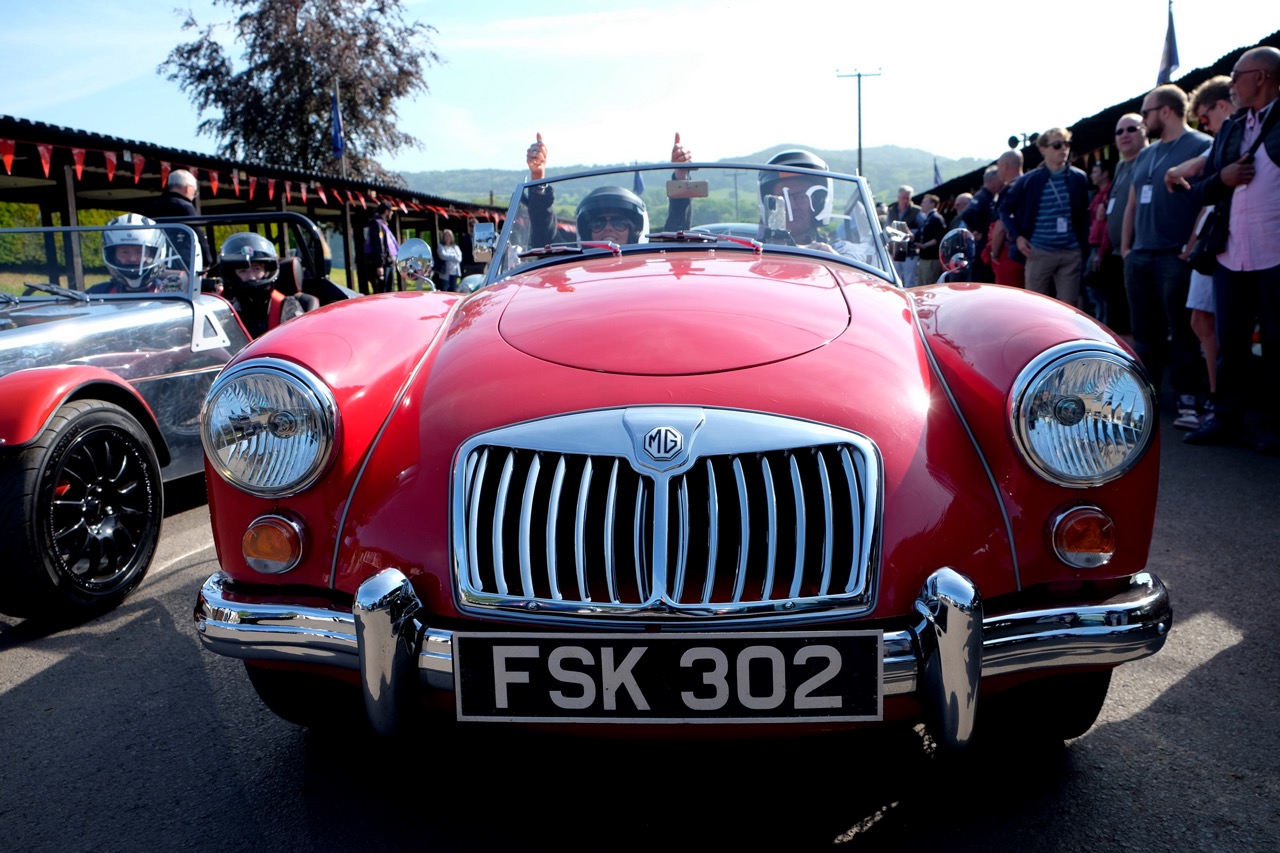The Hagerty Clubhouse at Bicester Heritage opened its doors just shy of a year ago. As a spot for petrolheads to gather and talk cars, the 4000sq ft space hosts themed hangouts (Bastille Night is upcoming 9 July for all you fans of French cars), boasts a racing simulator for anyone looking to take on some great tracks, and welcomes notable industry guests, like longtime motoring journalist Steve Cropley (16 July) and Hagerty’s own globetrotting video host Henry Catchpole (17 September).
It’s also a place to show off some of the world’s great machinery, with a regular rotation of cars new and old (and even older) coming through the doors. As we head into the Le Mans weekend, one of that race’s unsung heroes is currently on display.



The 1951 Frazer Nash Targa Florio you see here ran at the 24 Hours of Le Mans twice, first in 1952 in original cycle-wing “Le Mans Replica” guise and then again in 1954 in its present closed-wheel “Targa Florio” form, and after 55 years of long-term ownership, it remains largely as it was when it left the track seven decades ago.
Motorsport had always been part of the Frazer Nash ethos – just as it continues to be within the Frazer Nash Car Club today. So it’s no surprise the company was eager to get back at it following World War II. Relying heavily on its BMW-influenced prewar engineering to help inform its postwar cars, Frazer Nash truly cemented its name in 1949, when a works-sanctioned private entry claimed 3rd place overall at the French classic. From then on, the firm changed the name of its Speed model to “Le Mans Replica,” rightly honouring the achievement. Further Frazer Nash successes included an overall victory at the Targa Florio in 1951 as well as a win at the Sebring 12 Hours.
The car on display at the Hagerty Clubhouse, chassis 421/100/150, known by its UK registration “LXH 3”, was delivered new in early March 1951 and was thrown into competition by the end of that month by owner Rodney “Frank” Peacock.
Peacock and his racing partner, Gerald Ruddock (the duo were known in racing circles as Frank & Gerry), enjoyed tremendous success on the club scene, coming up often against C-Type Jaguars and Aston DB2s at circuits like Goodwood, Silverstone, and Dundrod.

The duo gave it a go at Le Mans in 1952, and after the factory Jags and Astons dropped out, they were still at it, though forced to slow considerably in the race’s final hours. But they finished – 3rd in class and 10thoverall – a monumental achievement for the privateers.

The car was rebodied at the factory that winter in order to conform to new sports racing regulations, its cycle-wing body replaced with the present, enclosed Targa Florio sheetmetal, and Peacock and Ruddock continued to exercise their handsome “new” mount around the UK.
In 1954, they returned to Circuit de la Sarthe, now with factory support, which included a a more powerful engine, and the car turned laps a full 20 seconds faster than it had two years before. Less than five hours into the race, however, Ruddock shunted at Indianapolis, his race – and that of LXH 3, over.

Peacock sold the car to Gerry Ruddock in 1955, who continued to campaign it around the UK until selling it on in 1958, after which it sold a couple more times until landing, in 1969, with its current owner, Robert Mansfield. Naturally, he, too, raced it, and has continued to drive it for pleasure over the last five-plus decades, and today it remains in extraordinarily well-loved yet mechanically sound condition. It still sports the replacement two-litre Bristol inline-six engine fitted by the factory in 1952, along with much of its original upholstery. In short, it is a relic with stories to tell.



The car has been consigned for private sale to Broad Arrow Auctions, which recently launched in the UK and is in the process of establishing its own showroom at Bicester Heritage. For now, you can see it on display at the Hagerty Clubhouse, so the next time you find yourself in the neighbourhood, stop in to spend some time with this stellar machine, and hear what it has to say.










That is a beautiful car-I have made a model of it and wanted to know if that is the proper colour for the 1954 le mans race as I would like it to be accurate-Any help would be much appreciated.
I have a photo of LXH 3 at Dundrod, I would like to send it to you – 1953 Royal Automobile Club’s Tourist Trophy Race held at Dundrod on the 5th September, race number 28, finished 11th overall and 3rd in class. I was there and I am in the photo!